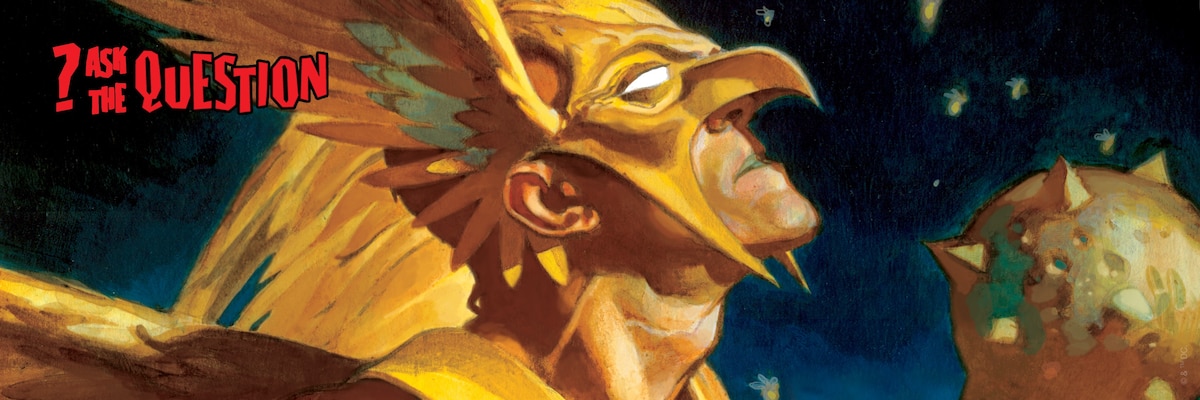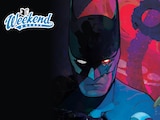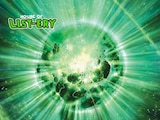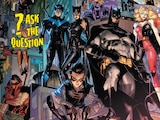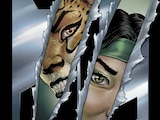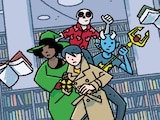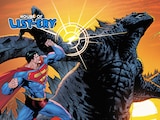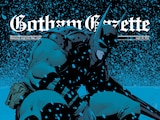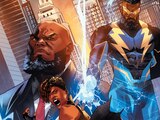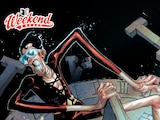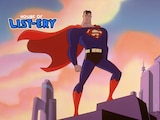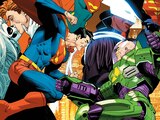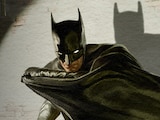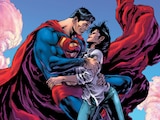Welcome back for another fine addition of ASK…THE QUESTION, the column where I, your humble investigator, shed light upon the darkest mysteries of DC history. Who am I? I’m Alex Jaffe, but I’m better known as HubCityQuestion to the DC Official Discord server, where I hold court to resolve your quandaries in real time (or, as close as I can manage). This month, I’ve delved deep into archives, scoured interviews with legendary talent, and spoken to a writer or two myself to get the answers you crave. We have such delights to show you.
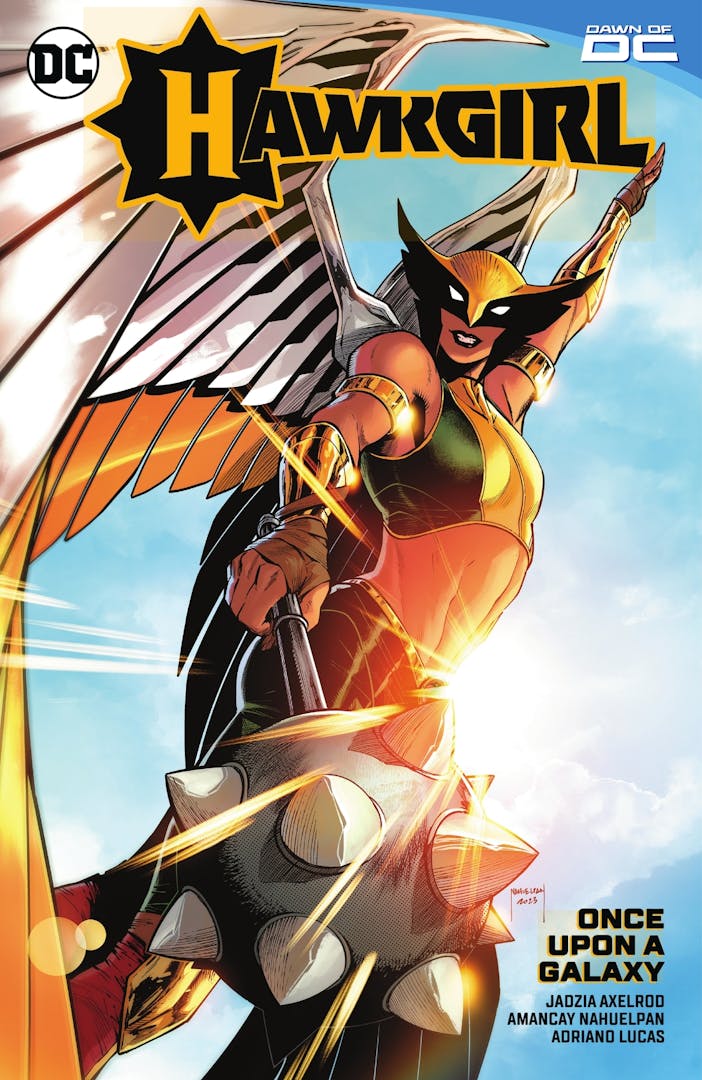
Blackzuel13 asks:
What does Nth metal do?
That’s a perfectly reasonable question, and yet a pretty complicated one. The properties of Nth metal, a staple of the Hawkman mythology, tend to change a lot over time. Most consistent is the idea that it carries some kind of magical, or anti-magical, properties, as well as some connection to the dimension of time, and of course, a factor of gravitational resistance which allows Hawkman to fly. For an up-to-date explanation, I posed this question to Hawkgirl writer Jadzia Axelrod, the most recent author of a Hawk-forward comic. She had this to say:
"Nth metal is metal not from our world but the Nth World, and as such follows the rules of that fantastical place. It defies gravity. It can ooze like a liquid and become hard as steel. It can bond with a host, enhancing their strength and abilities, allowing them to exist in inhospitable climates and heal quickly. It is the stuff that dreams are made of, and as such it is only limited by our dreams.
Except conduct electricity. It can't do that."
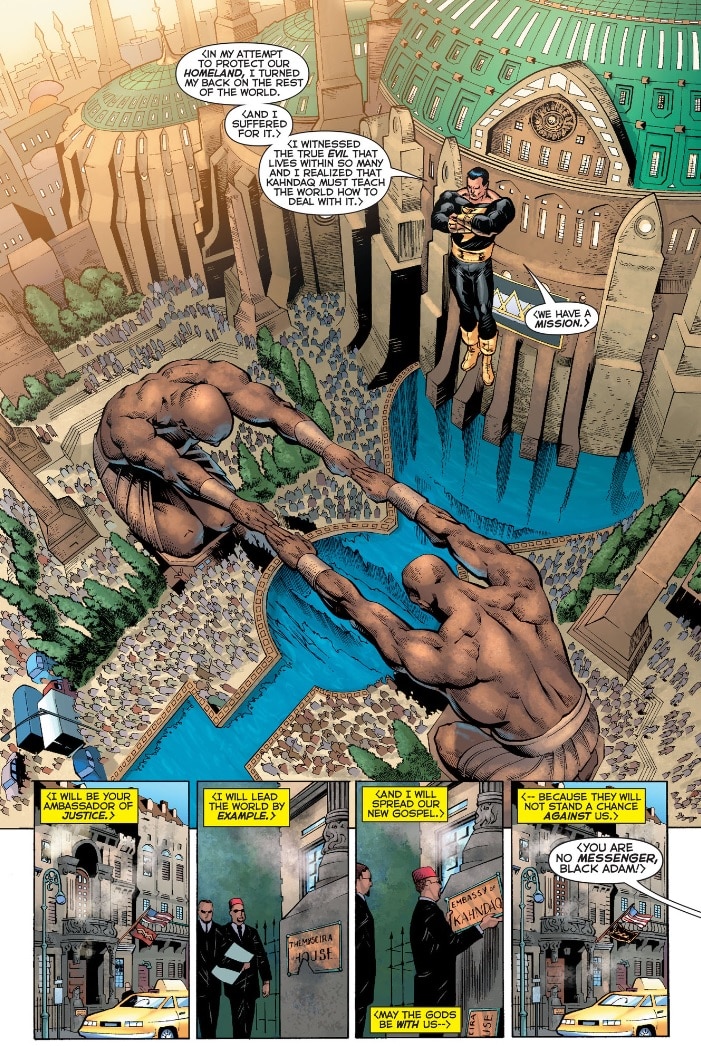
Cybernex007 asks:
I recently finished the miniseries, Shazam! The New Beginning. In this prequel to the Legends event, Black Adam was introduced as being from Egypt. That got me curious, when was Kahndaq first introduced and built into Black Adam’s origin? Was it before this, and they just decided to do something new?
Black Adam’s connection to Egypt is one of the few things that Roy and Dann Thomas didn’t reinvent with this miniseries. That goes all the way back to Marvel Family #1 in 1945, the first time we saw him. Black Adam’s Egyptian origins persisted in the 1970s Shazam! series, as well as the 1990s Power of Shazam series that followed this miniseries (elsewise reinventing much of the lore it established once again). It was only in Geoff Johns’ JSA that Black Adam was first linked to a fictionalized Middle Eastern country, where Kahndaq itself was also first established for that purpose.

Seraph asks:
The Batman: The Animated Series episode "Harlequinade" from the second season features a scene in which Harley sings "Say That We’re Sweethearts Again," a song from the 1944 film Meet the People. The song is incredibly fitting for Harley and what Joker puts her through, but is it known who behind the scenes found this at-the-time fifty-year-old song and decided it should be in the show? Had there been a 50th anniversary release or showing of "Meet the People" that had the writers thinking about it?
It’s well known among fans of Batman: The Animated Series that series co-creator Paul Dini and Harley Quinn voice actress Arleen Sorkin were personal friends and that Dini had written the role of Harley with her in mind. What isn’t as well-known is that “Say That We’re Sweethearts Again” was also written into the episode with Sorkin in mind. As Sorkin herself told the story in a 2009 interview, Dini wrote in that particular song as a tribute to a moment they shared during a time of national turmoil.
The original recording sessions for Batman: The Animated Series took place in Los Angeles in 1992. As it happened, this was the exact same time as the Los Angeles riots were taking place. To live in Los Angeles at the time was to have your whole life shaken, and Dini himself was no exception. As they rode home from the recording studio together while violence and righteous fury erupted around them, Sorkin said that in an attempt to lighten the mood, she sung one of her favorite novelty songs for Dini. Apparently, he was so touched by that moment of outreach that he would put the song into a future episode of the show.
One more insight I can offer is that this story predates the authorship of Batman Adventures: Mad Love in 1994, the text which itself would define the nature of Harley and Joker’s relationship. With this timetable in mind, we can extrapolate that it might have actually been this very song which helped bring their dynamic into shape.
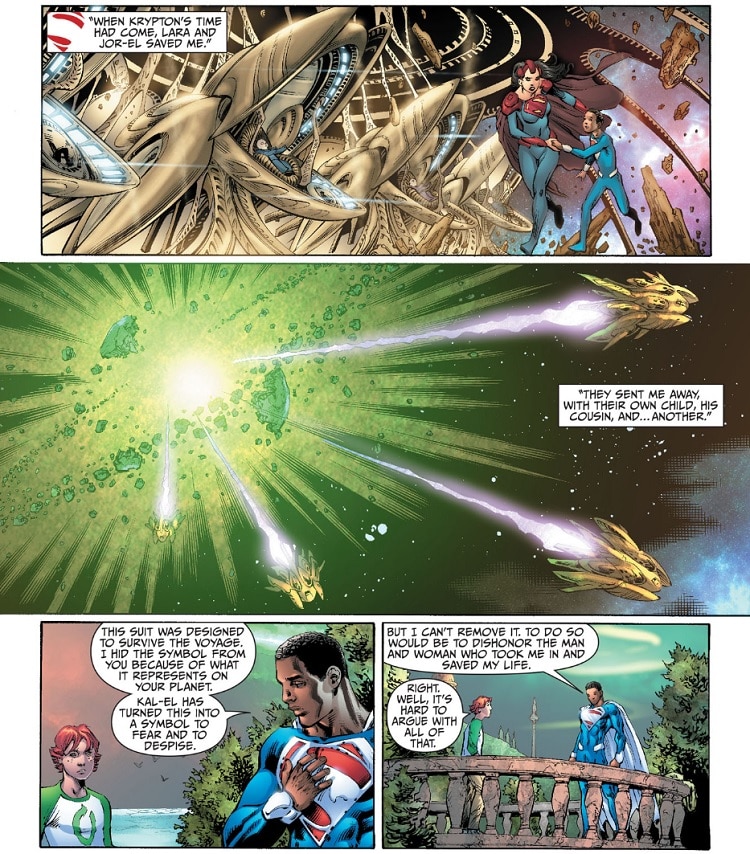
Cornholio asks:
I’m reading the Earth 2 comics and Val mentions a fourth Kryptonian that escaped the destruction of Krypton. Was their identity ever revealed?
You’ve hit on one of the many hidden lingering mysteries of the DC multiverse which the comics never got the space or opportunity to resolve. While there has been some speculation on the matter in fan-driven corners of the internet, the secret of Earth 2’s fourth Kryptonian rocket was never told…
Until now.
I got in touch with Val-Zod co-creator Tom Taylor to find out what his intentions were for that missing rocket, had his run on Earth 2 continued. Taylor told your favorite DC investigator that before it was decided that Earth 2 would be destroyed in the World’s End event, the plan was to reveal that it was Jor-El himself who had smuggled away from Krypton’s demise. He had sketches of an idea that this would eventually lead up to a Jor-El and Thomas Wayne team-up as the elder Superman and Batman of that world.
As followers of his more recent work know, Taylor would eventually return to the concept of Jor-El (and Lara) surviving Krypton in another multiverse story, Dark Knights of Steel. But now, we finally know what could have been.
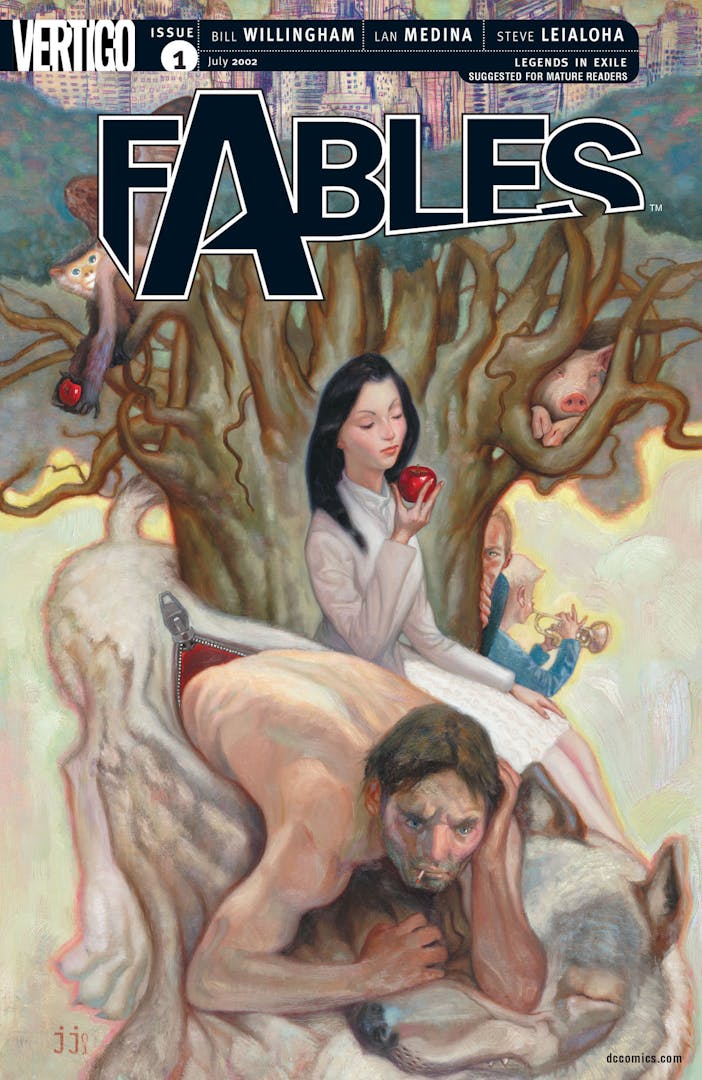
Twent asks:
Who wrote the most comics for Vertigo? I’m inclined to say either Milligan or Ennis but I’m curious.
There's really no easy way to answer this without going through and manually tabulating every single credit on a Vertigo comic.
So that's what I did.
I'll note that these numbers are specifically derived from Vertigo-branded comics. Comics sometimes considered "Vertigo," like Grant Morrison's Animal Man, or the titles from the short-lived "Helix" imprint predating Vertigo, or Swamp Thing issues prior to about halfway through Nancy A. Collins run, were not counted. (I will note, however, that even if we did, for example, include the first half of Peter Milligan's Shade, the Changing Man before the brand switch, the top of the rankings would still look the same.)
With all that in mind, I present here the top 10 most prolific Vertigo writers for posterity.
Bill Willingham: 268
Mike Carey: 241
Peter Milligan: 208
Brian Azzarello: 191
Garth Ennis: 160
Brian Wood: 140
Steven T. Seagle: 136
Lilah Sturges: 125
Matt Wagner: 111
Grant Morrison: 109
Keep in mind that with the reported impending return of the Vertigo imprint, it’s still anyone’s ballgame. For now, this is where the standings lie. But who knows what the future holds? That’s one of the few things I can’t tell you. For everything else, you need only ASK…THE QUESTION.
Alex Jaffe is the author of our monthly "Ask the Question" column and writes about TV, movies, comics and superhero history for DC.com. Follow him on Bluesky at @AlexJaffe and find him in the DC Official Discord server as HubCityQuestion.
NOTE: The views and opinions expressed in this feature are solely those of Alex Jaffe and do not necessarily reflect those of DC or Warner Bros. Discovery, nor should they be read as confirmation or denial of future DC plans.
